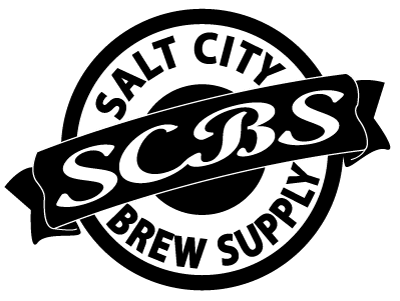All About Using Hops
Hop Usage & Utilization
- What are Hops?
- The Science of Hops
- When to Use Hop in Your Beer
What Are Hops
Hop Anatomy
IBU stands for International Bittering Unit but what does it mean?
“Bitter” vs. “Hoppy”
- Uinta Hop Nosh IPA – 82 IBUs
- Unita Detour DIPA – 95 IBUs
- Unita Dubhe Imperial Black IPA – 109 IBUs
- Pilsner Urquell – 40 IBUs
- Sierra Nevada Pale Ale – 37 IBUs
The Science of Hops
- Alpha Acids
- humolone
- cohumulone
- adhumulone
- Not bitter and not soluble in water
- Alpha Acids are “isomerized” in boiling wort, becoming iso-alpha acids.
- In addition to bittering, these acids are responsible for foam stability and bacteria inhibition.
- Beta Acids: Do you care?
- Beta acids do not isomerize, but will break down through oxidation, adding bittering compounds.
- Beta acid oxidation can also contribute unwanted aromas.
- So what is “utilization?”
- The percentage of available alpha acids that are isomerized during the boil
- Typically around 30%
- Affected by boil vigor, duration of boil, wort pH, wort density, kettle geometry, etc.
- Don’t forget, our water boils at a lower temperature here!
- Does the percentage breakdown of various alpha acids matter?
- Cohumulone is the most efficient at utilization.
- Cohumulone also drops out to a lesser degree during fermentation.
- “Perception” of bitterness
- Consider the SNPA vs. Pilsner Urquell example:
- SNPA: Cascade Hops (37 IBUs)
- 33-40% cohumulone
- Pilsner Urquell: Saaz Hops (40 IBUs)
- 23-28% cohumulone
- One experiment, in which equal amounts of humulone and cohumulone were isolated and used to brew two different beers found the cohumulone beer to have 62% more IBUs!
So is it useful?
- Provides a basis for standard measurement, allowing brewers to be consistent.
- It’s not a measure of iso-alpha acid content alone
- Based on an assumption that iso-alpha acids make up 5/7ths of the total bittering compounds in beer.
- This was based on the fact that, many years ago, hops were much more oxidized than they are today.
So what to do?
- Short of lab analysis, everything we do is an estimate.
- When using low cohumulone hops, consider increasing hops up to ~40%
- Also, IBUs drop by about 20% post-fermentation due to the drop in pH decreasing alpha acid solubility.
Bottom Line
- IBU is just a measuring standard. Don’t focus on what the number is, instead focus on acheiving consistency over multiple brews, regardless of what that number is.
Hops: Flavor and Aroma
Essential Oils
Flavor and aroma are found in essential oils:
- Myrcene
- Humulene
- Caryophellene
- Farnesene
These oils are degraded by heat
Myrcene makes up the largest portion
Myrcene in hops:
- Amarillo: 68-70% total oil (1.5-1.9ml/100g)
- Hallertau: 35-44% total oil (0.6-1.5ml/100g)
Whirlpool/Hop Stand Additions
- Account for temperature
- Above ~180F, isomerization is still occurring, though at a lower rate. (5-15% utilization)
- Below ~180F, isomerization is essentially shut down, but the lower temperature will require longer time to extract the oils.
- (Andrew) typically uses 175F for 30 minutes
Hops: Dry Hopping
Dry Hopping
- Extraction of essential oils via alcohol and pH.
- Higher temperature will speed extraction
- Fermenter geometry will affect contact time


